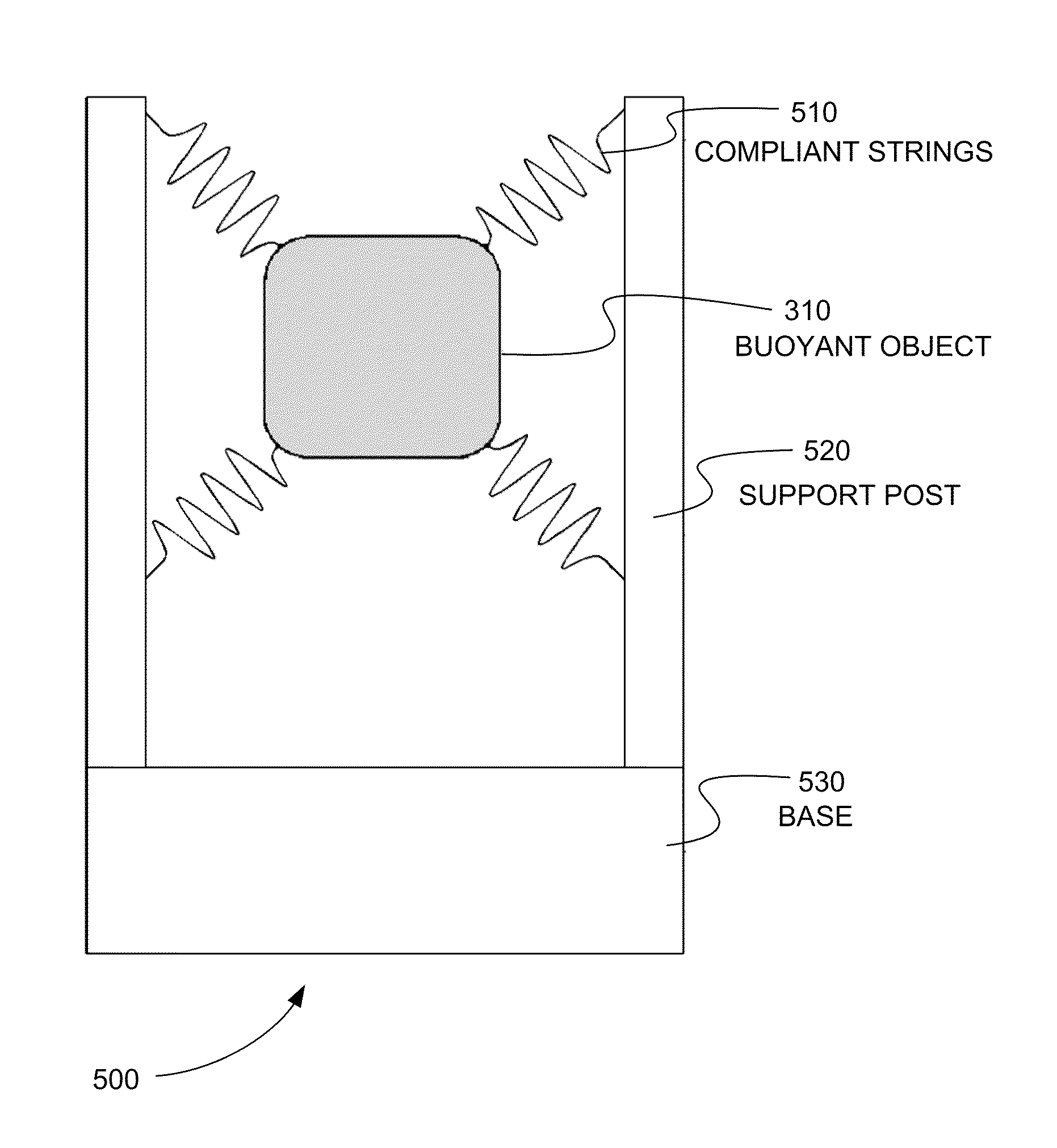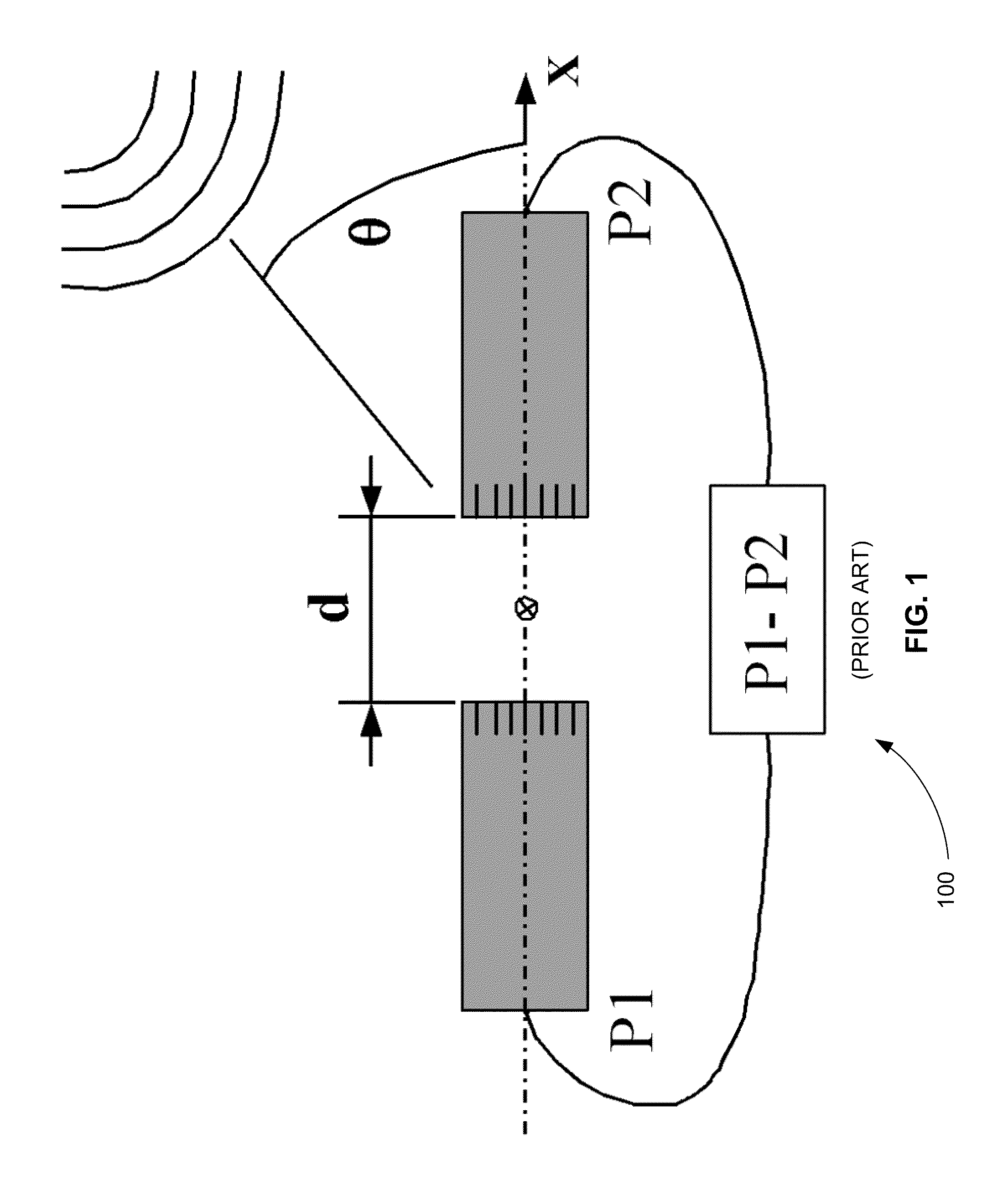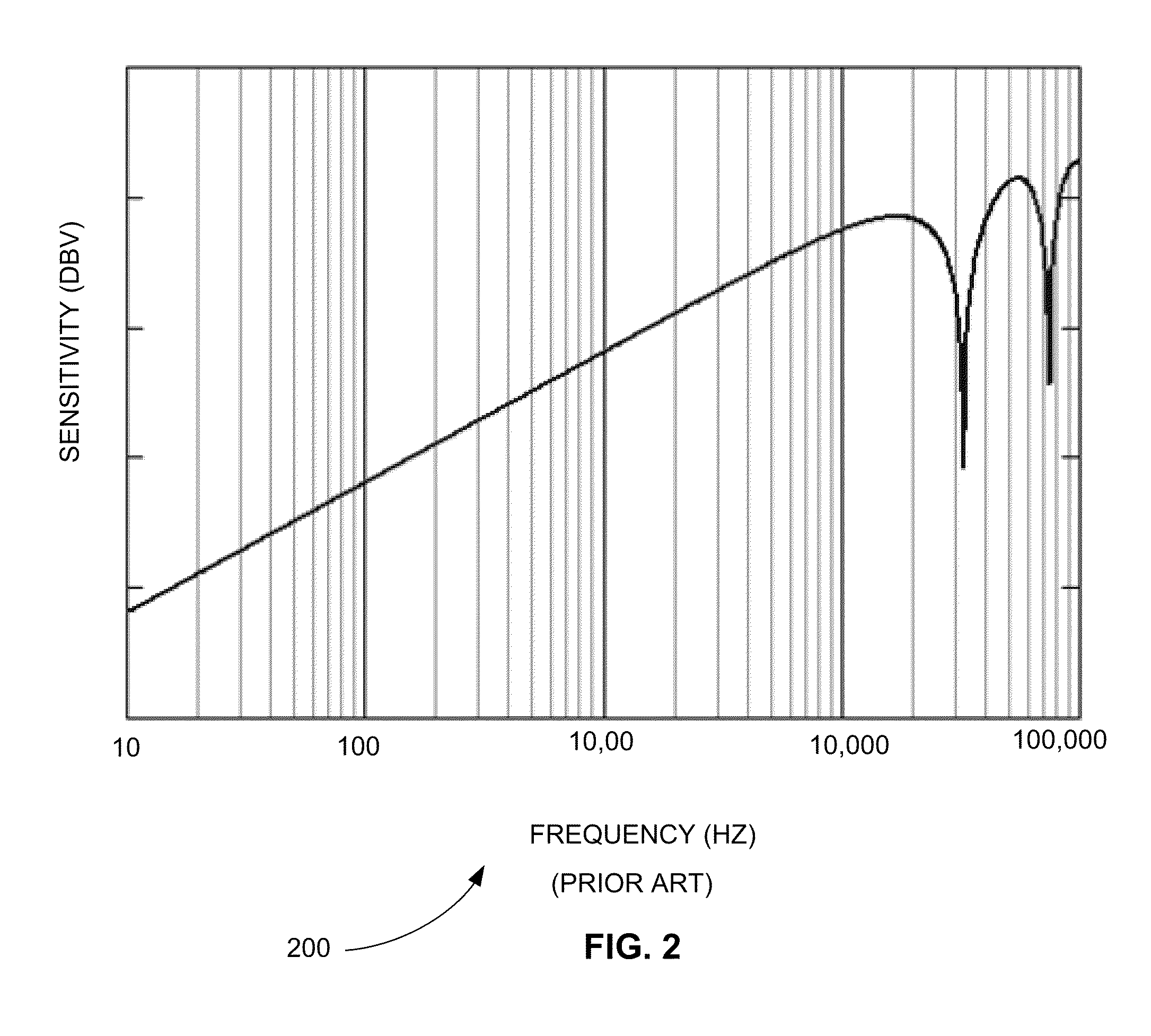Acoustic velocity microphone using a buoyant object
a technology of acoustic velocity and a microphone, which is applied in the direction of transducer details, electrical transducers, electrical apparatus, etc., can solve the problems of insufficient acoustic pressure sensing alone, sensor failure, and inability to distinguish the direction of an incident sound wav
- Summary
- Abstract
- Description
- Claims
- Application Information
AI Technical Summary
Benefits of technology
Problems solved by technology
Method used
Image
Examples
Embodiment Construction
[0020]There is a strong need for a vector type acoustic sensor such as an acoustic velocity microphone that is not a scalar pressure microphone. Currently two approaches exist for directional acoustic sensing. Fundamentally, both approaches rely on the acoustic pressure gradient to create the sensor's output.
[0021]FIG. 1 is a schematic diagram of an exemplary prior art pressure gradient sensor 100 using a finite difference method. Pressure gradient sensor 100 includes two matched omnidirectional microphones separated by a small distance d. A plane acoustic wave of amplitude P incident at an angle θ relative to the line along spacing d (designated as X axis in graph) can be expressed as,
p(x,t)=P·ej(ωt−kx·cos θ) (1)
where k is wave number (k=ω / c) and c is sound speed in air, ω is angular frequency.
[0022]The derivative of this pressure function with respect to distance x is the pressure gradient along X axis.
∂p(x,t)∂x=jωc·P·cosθ·jωt(2)
[0023]The output of the sensing system in FIG. 1 is...
PUM
 Login to View More
Login to View More Abstract
Description
Claims
Application Information
 Login to View More
Login to View More - R&D
- Intellectual Property
- Life Sciences
- Materials
- Tech Scout
- Unparalleled Data Quality
- Higher Quality Content
- 60% Fewer Hallucinations
Browse by: Latest US Patents, China's latest patents, Technical Efficacy Thesaurus, Application Domain, Technology Topic, Popular Technical Reports.
© 2025 PatSnap. All rights reserved.Legal|Privacy policy|Modern Slavery Act Transparency Statement|Sitemap|About US| Contact US: help@patsnap.com



